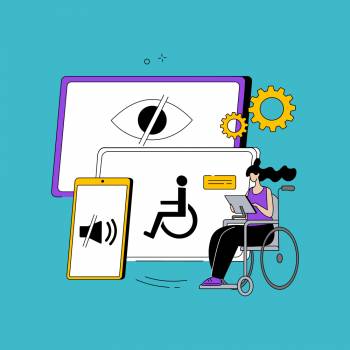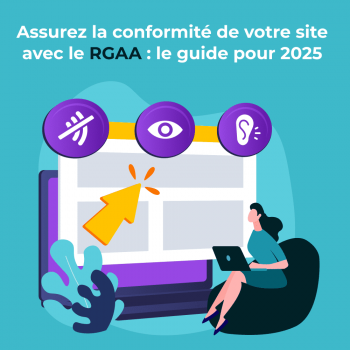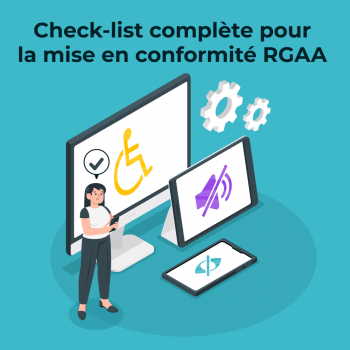Towards universally accessible digital: a strategic guide for your digital projects
Today's digital age offers an unprecedented opportunity to include and engage all segments of the population. The key to this inclusion lies in web accessibility, an approach that is not limited to a legal or moral obligation, but opens the door to an enriched user experience for all. This article explores the crucial strategies for integrating accessibility into all aspects of digital presence.
1. Inclusive Design Practices
Inclusive design starts with a thorough understanding of various disabilities and their impact on the use of digital tools. Agencies need to take a holistic approach, integrating accessibility into the UX/UI design process from the earliest stages. This involves creating inclusive prototypes and carrying out accessibility audits to identify and rectify potential barriers early in the development cycle.
2. Rigorous development and testing
Development for accessibility is not just about following guidelines; it's about incorporating coding practices that facilitate accessibility, such as semantic markup and the use of ARIA. This is complemented by rigorous accessibility testing, including tests with real users with disabilities, to ensure that digital solutions are truly usable by all.
3. Ongoing Education and Compliance
Committing to web accessibility also means committing to a process of continuous learning and compliance. This means raising awareness and regularly training teams (designers, developers, product managers) in accessibility best practices. In addition, maintaining compliance with various international accessibility legislation and standards is essential to ensure that digital solutions remain accessible and inclusive.
The adoption of these strategies by digital agencies not only translates into compliance with standards, but marks a step towards a future where digital is truly universal. It's a move that not only amplifies your brand's reach, but also enriches the digital experience for all users, creating a truly inclusive digital landscape.
Why is accessibility crucial in a digital project?
-
Inclusivity and Ethics: Designing for accessibility means creating sites and applications that are usable by everyone, including people with different types of disability. This demonstrates a human-centered approach and reinforces your brand's ethical values.
- Legal compliance: Many countries impose web accessibility guidelines, such as the WCAG (Web Content Accessibility Guidelines). Compliance with these standards is not only a matter of social responsibility, but also a legal requirement.
- Improving the User Experience: Accessibility improves the user experience for all. Elements such as text legibility and intuitive navigation benefit all users, not just those with special needs.
- SEO benefits: Search engines favor accessible sites. A clear structure, alt tags for images, and well-organized textual content improve your site's SEO.
How to integrate accessibility into your digital strategy?
-
Assessment and testing: Start by assessing the accessibility of your existing site. Use tools like color contrast checkers and screen readers to identify areas for improvement.
- Inclusive Design: Integrate accessibility right from the start of the design of your site or application. This includes taking into account all types of users in your mock-ups and prototypes.
- Training and awareness: Train your team in accessibility best practices. Make them aware of the different types of disability and the assistive technologies used by people with disabilities.
- Ongoing monitoring: Accessibility is not a one-off objective, but an ongoing process. Update your site regularly to ensure it remains accessible and compliant with the latest guidelines.
Our expertise
Our team of web accessibility experts is dedicated to transforming your digital projects into inclusive experiences. We have solid experience in the design, development and maintenance of sites and applications that comply with international accessibility standards such as WCAG.
By working with us, you benefit from a holistic approach to accessibility, integrated into every stage of your digital strategy. From inclusive design to the ongoing education of your teams, we're here to support you on your journey towards universally accessible digital, and to help you achieve your goals for inclusion and user engagement.
To find out more about key strategies for universal web accessibility, contact us!








